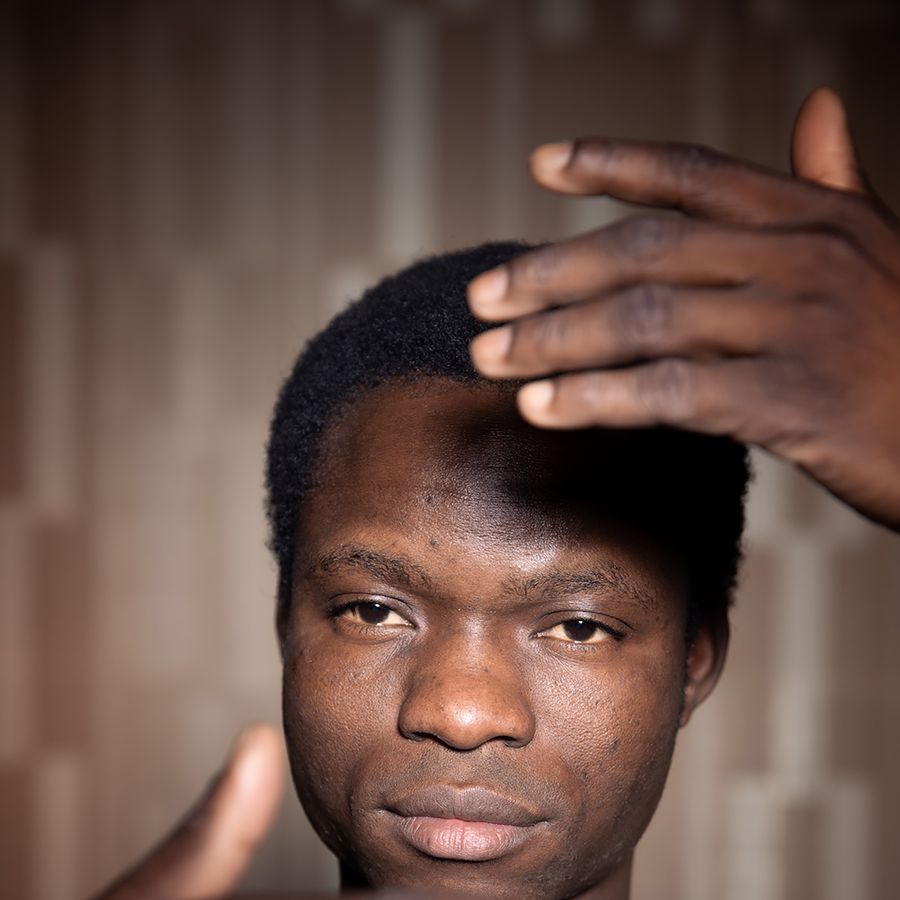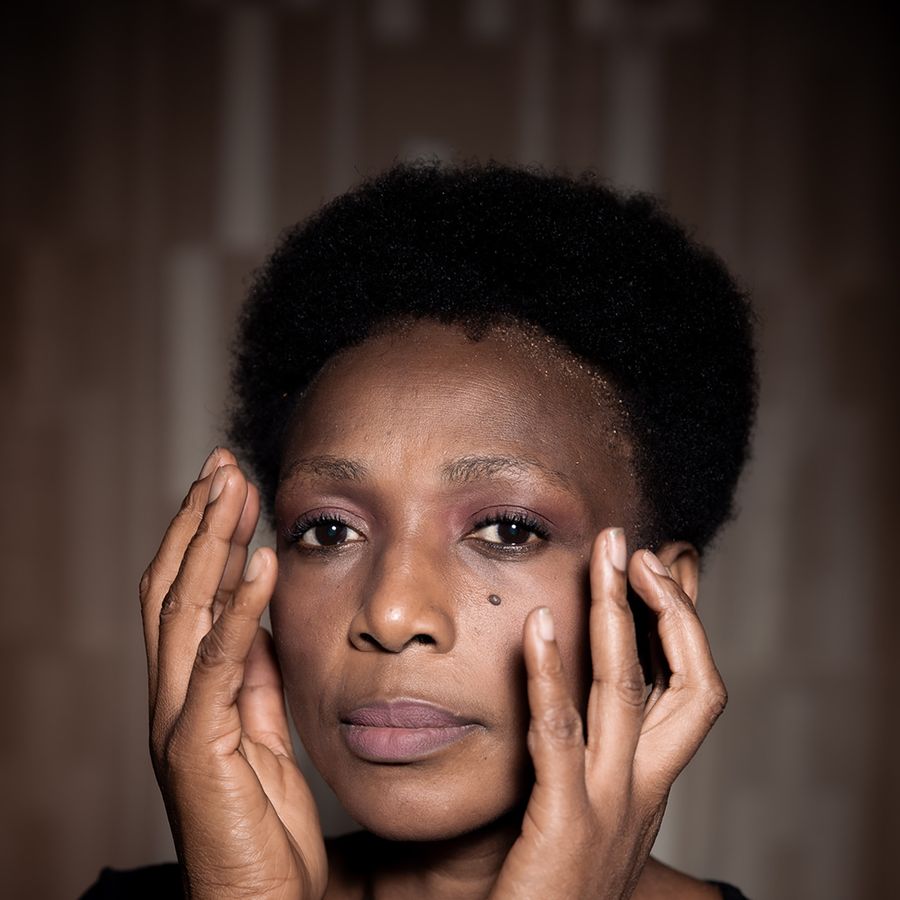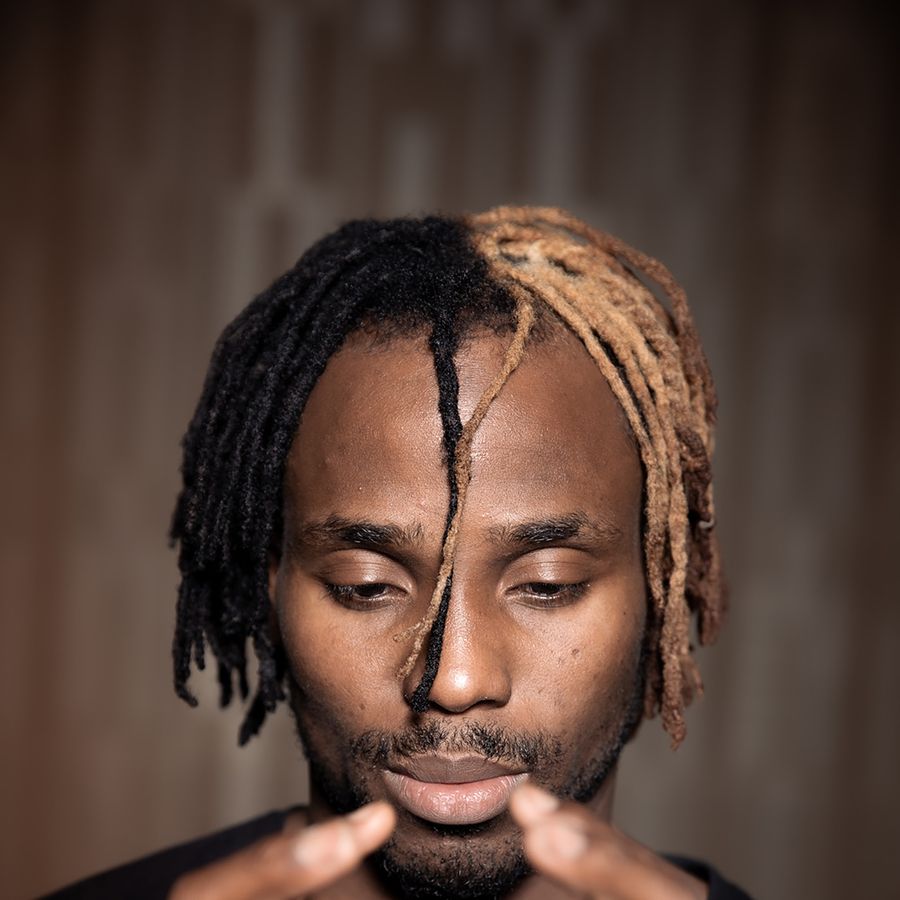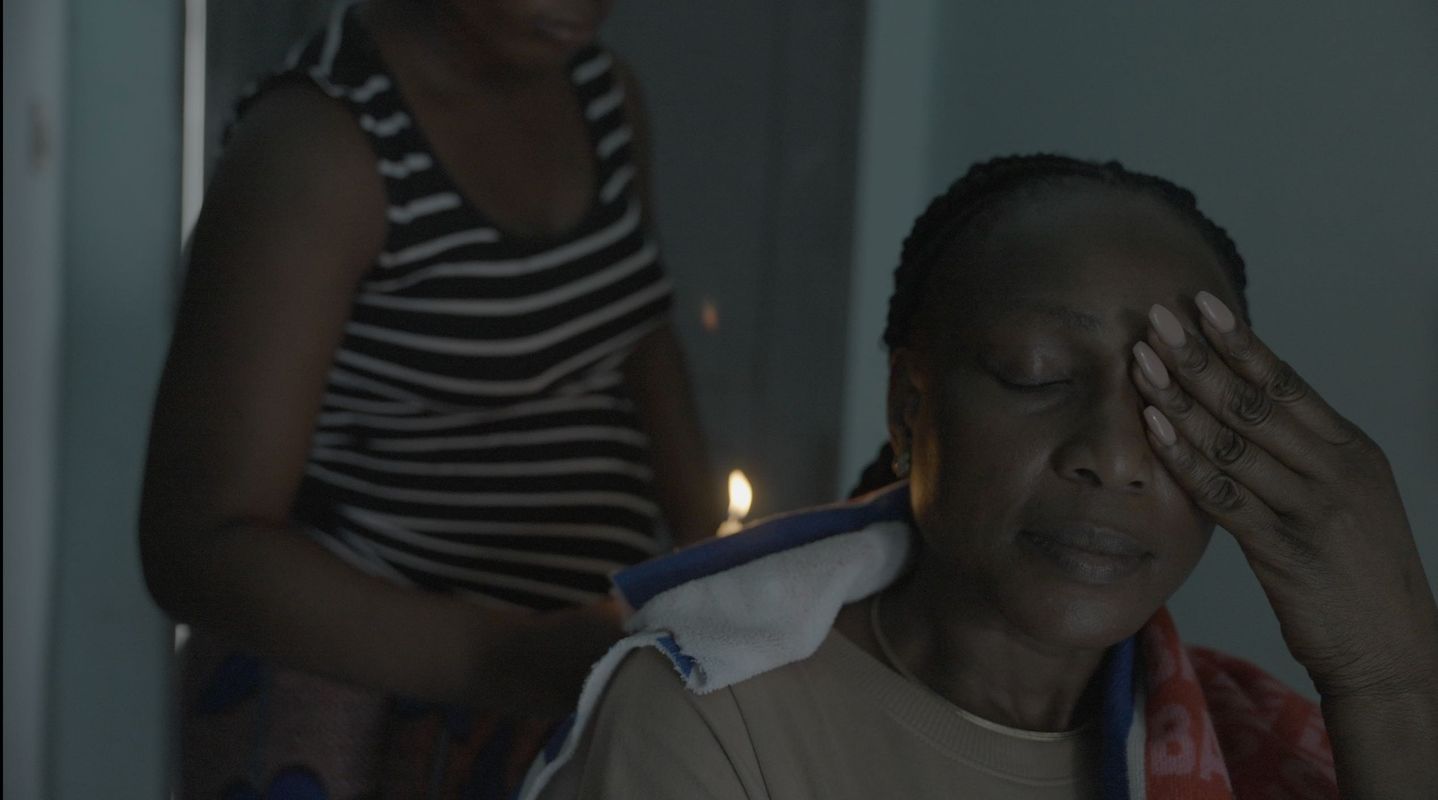Aro Ilè
Choreographer and dancer Awoulath Alougbin wants to bring to the scene a connection between krump – a street dance movement that emerged in the early 2000s, that was, and still is, a way out for young people's daily struggles and a means of resistance against the oppressor – and a dance that brings the soul of ritual dances back to its origins. With these ritual dances, Awoulath makes a reverse movement, back in time and across the continents. Through myth and dance, she goes in search of the cosmic roots of mankind. That universal place where we can all come home.
K.R.U.M.P Kingdom Radically Uplifted Mighty Praise
Krump is a street dance, developed and popularized in South Central Los Angeles and Compton, California in the early 2000s. Its original proponents were Thomas “Tommy the Clown” Johnson (who invented ‘clowning’, the dance that Krump is based on) Ceasare “Tight Eyez” Willis, Jo’Artis “Big Mijo” Ratti and Marquisa “Miss Prissy” Gardner.
Krump is more than a performance art or dance style - it is a movement of resistance against oppression.
In her work, Sarah Ohmer asserts that Krump and Clowning function as “performance movements”, in other words, performance linked to ideologies, social movements and spiritual activism resisting against the State. Krump and Clowning both embody choreographic self- expression through body language set against the backdrop of the current cultural, socio- economic and political context.
Performance, ideology and spirituality go hand- in-hand in African dance. Krump and Clowning adapt this choreographic base and music to promote the values of the African diaspora: self- esteem, cultural preservation, self-agency, resistance and spirituality as forming part of the African American experience.
Krumpers and Clowners assert that their performance aesthetic fills a spiritual gap in the hip-hop world that during the late 1990s/early 2000s started to lack “morals and values” (Dragon in Rize). Dragon explains that Krump is the “only storytelling medium they feel is appropriate”. For dancers like Dragon, Krump is a form of narrative performance, creating a link to the ‘griot’ community storytellers of the African continent.
As Tommy the Clown taught his students - at the heart of clowning is improvisation. This cultural understanding of improvisational choreography and its relationship to African diasporic dance as opposed to Western dance forms is another key link between Krump and Clown dancers.The Krump dancers’ belief in a link with spiritual dance, along with their “being struck” (a spiritual experience where the dancer falls into a trance, loses control of their body and loses consciousness) that connects them to the
“body/mind/spirit continuity” widely seen in African performance art. (Gottschild, “Crossroads, Continuities and Contradictions”).
For Awoulath, it is this connection with “spiritual dance” that most clearly links Krump to African continental tradition. When she talks of the similarities between Krump and African traditions, she draws on the spiritual dances of the Vodun (which means ‘spirit’).
In Benin, as in the south and centre of Togo, Ghana and Nigeria, animist traditions have existed for more than 10,000 years and are still observed. During the transatlantic slave trade of the 16th to 19th centuries, the central African people took their traditions with them. Osha Pinnock sees fundamental musical experiences, including dance, as being stages in the cultural development of a collective, but diverse, African diaspora.
Krump, as a category within the hip-hop movement, is a fascinating recent expression of this ideology, whilst still being closely linked in form and meaning to the dances that Awoulath references. From its beginnings, Krump has spread worldwide with large Krump scenes in Belgium and Japan. It is no longer only African American dancers who incorporate the spirit of this style, but dancers the world over who use it as a means of self expression.
To understand Awoulath Alougbin’s approach to this theme, we need to look a little more closely at the system underpinning West African animist traditions. Geomancy, (The Law, Ifa or Afà. Ifa or Fa, Afà), is a system of divination. It is a complex scheme that can be found across the Americas, West Africa and the Canary Islands and plays an important role in traditions such as Santeria, Cancomble, Palo, Vodun and in some traditional African religions. Its earliest origins are found in West Africa. It is considered to be knowledge corresponding to the past, present and future. Awoulath Alougbin envisages a conversation between Krump and the ancestors, linking past, present and future. This meeting between the past - via the “Returners” - and the present - via Krump – makes possible a new direction for the future, because in looking at the past we can change the future.
KRUMP & ritual dance
“Krump has many points in common with some of Benin’s ritual dances. What inspires me to embark on this research is the desire to know and understand the basis and spirit of this dance form. I’m embarking on a process of intriguing and profound research. Ritual percussion can put us into a trance-like state. The strength and elegance of Krump takes us on a journey between various states of being. Through these two concepts, we can discover the soul’s poetry, or the trance-like depths of our being.” - Awoulath Alougbin
In 2005, David LaChapelle produced his documentary Rize about the Krump phenomenon. Awoulath saw the documentary in the same year while touring with the National Ballet of Benin, and it affected her deeply. What she saw reminded her of her childhood and of the ritual dances of Vodun followers, dancing
outside temples and using the dance as a form of prayer. It seemed to her that the essence of these dances had transcended time and space to reemerge in a new form, while still expressing the same fundamental story. The experience stayed with her and on returning to Benin, she decided to work with a group of young Krumpers in Cotonou. She took them to a village in the middle of the country where people danced to the traditional rhythms of the “Returners” - the ancestors. The encounter between Krump and the rhythms of the “returners” proved to be a very powerful combination.
Awalouth now wants to take her research further. She would like bring the Krump dancers and the rhythms of the “returners” together into a perfomance combining narration and scenography with dance, and use this encounter to tell a story of resilience.
The cast










